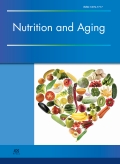Authors: Lockyer, Stacey | Yaqoob, Parveen | Spencer, J.P.E. | Rowland, Ian
Article Type:
Research Article
Abstract:
Olive oil, an important component of the Mediterranean diet, is rich in polyphenols and is known to possess positive health effects relative to other dietary fats. In addition, the leaves of the olive plant (Olea europaea) contain similar phenolics (oleuropein, luteolin-7-glucoside, apigenin-7-glucoside, verbascoside and hydroxytyrosol) to those of olives and olive oil, although at higher concentrations. For example, the most abundant is the secoiridoid, oleuropein, representing 1–14% of olive leaf weight vs. 0.005–0.12% in olive oil. Although currently considered a waste product of the olive oil industry, recent research has suggested beneficial effects of phenolic-rich olive leaf extracts (OLE) in
…modifying cardiovascular risk biomarkers such as blood pressure, hyperglycaemia, oxidative stress and inflammation, as well as improving vascular function and lipid profiles. Despite this, data regarding the biological actions of OLE has mostly derived from animal, in vitro and ex vivo studies, with limited evidence deriving from human trials. Although the absorption and metabolism of olive oil phenolics has been investigated, less is known about the bioavailability of phenolics from OLE, limiting the interpretation of existing in vitro and ex vivo data. The current review will begin by describing the phenolic composition of olive leaves in comparison with that of the better studied olive oil. It will then review the effects of OLE on cardiovascular risk factors, covering both animal and human studies and will end by considering potential mechanisms of action.
Show more
Keywords: Olive leaf, olive leaf extract, olive phenolics, cardiovascular disease
DOI: 10.3233/NUA-2012-0011
Citation: Nutrition and Aging,
vol. 1, no. 2, pp. 125-140, 2012





